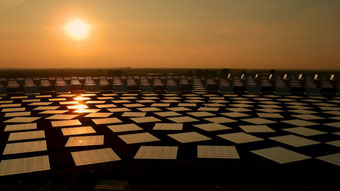Renewable energy scorecard: How the G20 nations stack up
 Renewable energy — once a mere blip on the world’s radar screen — has finally gained a foothold, notably in the countries that compromise the Group of Twenty Finance Ministers and Central Governors known as the G20.
Renewable energy — once a mere blip on the world’s radar screen — has finally gained a foothold, notably in the countries that compromise the Group of Twenty Finance Ministers and Central Governors known as the G20.Since 2002, the G20 countries have more than tripled the amount of their electricity produced from wind, solar, geothermal, tidal and wave power, according to a Natural Resources Defense Council report released Monday. Global investment in renewable energy also has boomed, growing 17 percent to hit a record $257 billion in 2011, according to a separate report released Monday by the UNEP Collaborating Centre for Climate & Sustainability Energy Finance.
Despite these advances, the share of electricity from renewable energy sources is still a small portion — just 2.6 percent for the G20 as a whole — of their overall electricity mix.
The NRDC’s Delivering on Renewable Energy Around the World: How Do Key Countries Stack Up? report ranks the G20 nations based on the share of electricity that comes from renewable energy. The report also aims to petition world leaders ahead of this month’s Earth Summit in Rio de Janeiro to commit to increasing the amount of renewable energy to 15 percent of total electricity by 2020 — more than double what is predicted under current trends.
The United States increased its share of electricity produced by renewable sources by 341 percent over the past decade. And it ranked second in total energy produced from wind, solar, geothermal and tidal with 111.93 billion kilowatt hours in 2011. Still, only 2.7 percent of its total electricity production came from renewable energy, putting it in seventh place behind France, the UK and several other European countries.
Within the G20, Germany had the largest amount of its electricity produced from renewable energy in 2011. The European Union as a bloc was ranked second. Italy, Indonesia and the UK rounded out the top five. (Check out the graphic below for the complete scorecard.)
All of these countries trail Spain, Portugal, Iceland and New Zealand, which produce 15 percent of their electricity from solar, wind, geothermal, tidal and wave power, the NRDC said. For example, only 10.7 percent of Germany’s electricity comes from renewable energy sources.
South Korea experienced the largest growth since 2002, followed by China and then Brazil.

You can return to the main Market News page, or press the Back button on your browser.

